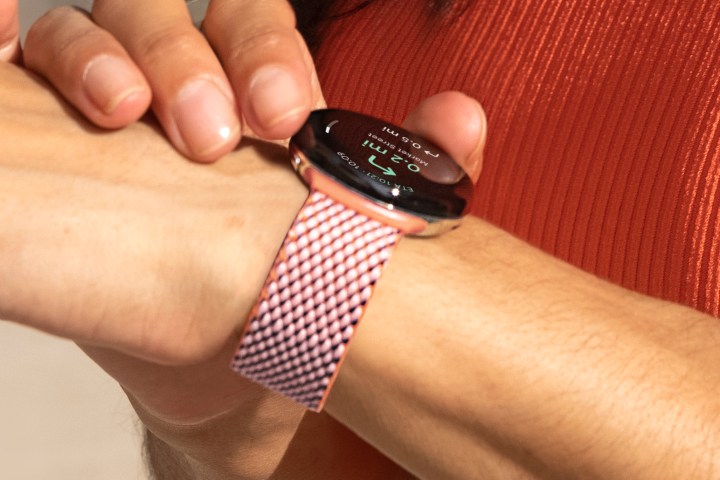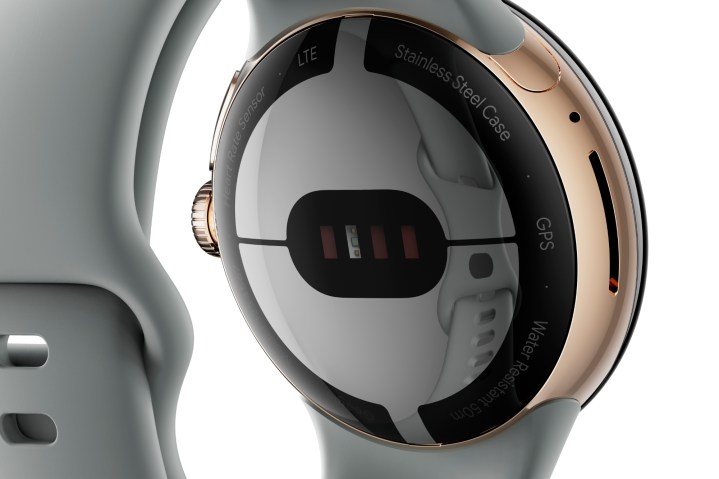Google has thrown its hat into the smartwatch ring with the Pixel Watch, a flashy new Wear OS device on a playing field already occupied by veteran Android smartphone makers like Samsung, Moto, and Oppo.
The fact that Google makes it may be the most intriguing thing about the Pixel Watch. Coming from the company that created Android and Wear OS in the first place, not to mention its successful Pixel smartphone lineup, Google’s new smartwatch has been one of the most highly-anticipated wearables in years.

While many had dreamt that Google would hit it out of the park with its first smartwatch, it seems the company decided to play it safe, debuting the Pixel Watch with a relatively pedestrian set of features — things that are standard on any modern smartwatch — rather than going for anything remarkably innovative.
This has left many folks wondering about the array of health and fitness features offered by Google’s Pixel Watch and how it compares to behemoths like the Galaxy Watch 5 and the Apple Watch Series 8. One of the biggest lingering questions is whether or not the Pixel Watch has ECG support.
Is there an ECG app on the Pixel Watch?
While Google isn’t exactly pushing the limits of technology with the Pixel Watch, it hasn’t been stingy with the health sensors either. It’s fair to say that everything you’d expect from a smartwatch is here, including a heart rate sensor and a “multipurpose electrical sensor.” These sensors include support for an ECG app that can assess your heart rhythm to detect signs of atrial fibrillation.
Of course, those are table stakes for any modern smartwatch, so it would have been absurd for Google to omit them. Apple introduced an ECG app on the Apple Watch Series 4 in 2018, and Samsung added it to the Galaxy Watch 3 two years ago.

It helps that Google now owns Fitbit, which drives much of the technology inside the Pixel Watch. Fitbit has offered devices with ECG capabilities since the Fitbit Sense came along in 2020. With Google marketing the Pixel Watch with “Health and fitness by Fitbit,” it’s fair to say that the ECG technology is an evolution of what’s found on Fitbit-branded wearables.
Further, since Fitbit is platform-agnostic and the Pixel Watch works with any smartphone running Android 8.0 or later, the ECG capabilities should be available no matter what device you pair to your Pixel Watch. That’s a stark contrast to the Galaxy Watch 5, which requires that you pair it with a Samsung phone since the Samsung Health Monitor app is only available on the Galaxy Store.
Where is the Google Pixel Watch ECG available?
ECG is a medically-regulated feature, which means that it requires approval by government health agencies and regulators. Google has to play by the same rules other smartwatch manufacturers like Apple did when rolling out this feature, which means it’s not available everywhere.
Fortunately, Google has a head start here. Since it built the Pixel Watch health features on Fitbit’s technology, the Pixel Watch can boast ECG support in 28 of the 30 countries and regions where the Fitbit ECG feature is available.

As of this writing, that includes American Samoa, Australia, Austria, Belgium, Canada, Chile, Czech Republic, France, Germany, Guam, Hong Kong, Ireland, Italy, Luxembourg, Netherlands, New Zealand, Norway, Poland, Portugal, Puerto Rico, Romania, South Africa, Spain, Sweden, Switzerland, United Kingdom, United States, and the U.S. Virgin Islands. While the Fitbit Sense 2 and Fitbit Charge 5 also offer the ECG app in India and Singapore, these two countries aren’t on the list for the Pixel Watch yet, for whatever reason.
Google will undoubtedly expand this list as it receives regulatory approval in more countries. While it’s starting from behind — the Apple Watch ECG app is now available in 147 countries and regions — it still offers impressively broad international support out of the gate. By comparison, the Apple Watch Series 4 launched its ECG feature solely in the United States, and it wasn’t until six months later that it expanded to reach a similar number of places.
Editors' Recommendations
- Best Google Pixel deals: Save on Pixel 8, Pixel Buds, and Pixel Watch
- Check your Google Pixel Watch right now for two new features
- Have one of these Google Pixel phones? You’re getting Circle to Search
- A big Google Pixel 9 feature just leaked, and it sounds impressive
- The best Google Pixel Watch deals you can shop right now
